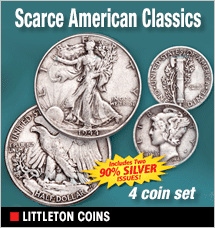Silver Screen, Golden Years
The Barrymores as Pop Culture Icons

Ethel Barrymore appeared on Bing Crosby’s radio show on December 21, 1949. Miss Barrymore deigned to do something she never would have done in her younger days: she poked fun at herself.
When Bing asked her opinion of his pseudo-rival Bob Hope, she replied, “Well, there’s his childlike simplicity.”
“And?” asked Bing.
She answered, laughing, “That’s all there is. There isn’t anymore.”
She hardly got the line out before cracking up, and the audience roared with laughter. It was a line from a play she had done almost 50 years earlier – a line that, to her chagrin, made her
famous.
John, Lionel, and Ethel Barrymore were the dynamic trio of siblings who dominated theatre in the early decades of the 20th century, and came to have a prominent place in film — becoming icons of pop culture in a way entertainers had never been before or perhaps since.
The siblings’ dominance of art and culture in the U.S. was evident on Broadway in the first week of March 1920. There, at the Plymouth Theatre, John Barrymore, the youngest of the trio at 38, made his Shakespearian debut in Richard III.
Ethel, the middle child and the reigning grand dame of theatre at 40 years old played over at the Empire in Declasse.
Lionel, the eldest at 41, a versatile character actor, played at the Criterion in The Letter of the Law. These three siblings were stars on Broadway at the same time.
The media took note and began to refer to the Barrymores as “the royal family of theatre.” They became so well known by this moniker that when playwrights George S. Kaufman and Edna Ferber wrote their comedy, and rather wicked parody, of the Barrymores, they titled it The Royal Family. It poked fun particularly at John, known as a heavy-drinking womanizer; and Ethel, for being a prima donna of the stage. Ethel was not happy. She had yet to learn to laugh at herself or shrug off the innumerable imitators of herself and her brothers.
One of the first instances of being imitated occurred in 1904 over her famous “There isn’t any more” line. She was playing in a comedy called Sunday on Broadway where her role was a young orphaned woman raised by rough miners in the West, who comes to London to meet her aunts. Charles Frohman, famous theatrical producer of the day, sat in on the rehearsal. In a pivotal scene, she is supposed to read a letter aloud to her genteel aunts, but she stops herself because there is a part that is too personal for them to hear, so she just runs offstage.
Ethel suggested to Mr. Frohman that it would make more sense for her to say something in an awkward and embarrassed manner before she runs off. Ethel is reported to have said, “Oh, maybe something like, ‘That’s all there is. There isn’t anymore.’”
Frohman left it in, and because of her delivery, it brought the house down. To her annoyance, the line became associated with her, and comics on the vaudeville stage mimicked her.
Though she had a brief foray into silent films in the teens, she preferred the theatre, where she remained, for the most part, until the late 1940s and a string of films, one of which earned her an Academy Award.
Her brothers took to film early and remained there, Lionel as a character man who appeared in over 200 movies, and like Ethel, he was also parodied in pop culture, imitated by scores of mimics.
John, of course, was The Great Profile, who played romantic leads until his own dissipated lifestyle and his casual attitude toward his work led him to parody himself far more effectively than another comic probably could. They were descended from a long line of actors on both their paternal and maternal sides of their family, the Drews, and outshone all their contemporaries and their famous thespian ancestors. The three appeared in only one film together, “Rasputin and the Empress” in 1932.
When she died in 1959, the last of her siblings, the lights dimmed at the Ethel Barrymore Theatre in New York. She had appeared there when it opened in 1928, the first leading lady on that stage.
Today, we have “celebrity,” which is not the same thing. Those three were truly greats; we can neither replicate their brand of greatness or the times in which it shone. Because, as Ethel noted...
“That’s all there is. There isn’t anymore.”
Jacqueline T. Lynch is the author of Ann Blyth: Actress. Singer. Star., available online at Amazon, from CreateSpace and the author. Email: This email address is being protected from spambots. You need JavaScript enabled to view it. .



























































